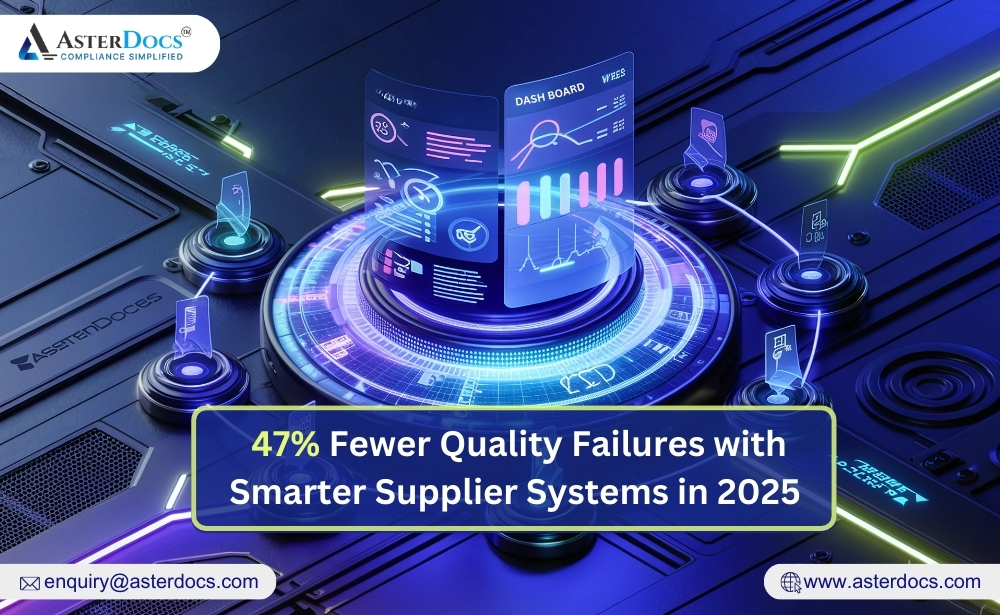In today’s interconnected world, ensuring the transparency and accountability of products and processes is more critical than ever. This is where traceability comes into play. Traceability refers to the ability to track the origin, movement, and transformation of a product or service throughout its entire lifecycle.
This blog delves into the core principles of traceability, explores its benefits for businesses across various industries, and outlines strategies for implementing effective traceability systems. We’ll also introduce Asterdocs, a comprehensive document management system (DMS) that empowers businesses to streamline traceability processes, gain valuable insights, and build trust with stakeholders.
Traceability allows you to track a product or service from its raw materials or initial stages of development all the way through to the final consumer.
This can involve:
-
Identifying Suppliers: Knowing the origin of raw materials and components used in your products.
-
Tracking Production Processes: Monitoring the transformation of raw materials into finished goods.
-
Distribution & Logistics Tracking: Knowing the movement of products through the supply chain.
-
Sales & After-Sales Service: Tracking product sales and providing support to customers.
Effective traceability systems often involve data capture at various points along the product or service lifecycle. This data can include:
-
Batch numbers or lot codes
-
Production dates and locations
-
Supplier information
-
Transportation details
-
Customer data and purchase history
Traceability offers a multitude of benefits for businesses of all sizes and across various industries. Here are some key advantages:
-
Enhanced Product Quality & Safety: Traceability allows for pinpointing the source of any incidents or product defects, facilitating swift corrective actions and safeguarding consumer safety.
-
Improved Supply Chain Efficiency: Traceability provides valuable insights into supply chain operations, enabling businesses to identify bottlenecks and optimize logistics for better efficiency.
-
Boosted Brand Reputation: Consumers increasingly value transparency and ethical sourcing. Robust traceability demonstrates a commitment to responsible practices and builds trust with stakeholders.
-
Regulatory Compliance: Many industries have regulations requiring detailed product traceability. A strong traceability system ensures compliance and avoids potential legal repercussions.
-
Improved Risk Management: Traceability allows for identifying and mitigating potential risks throughout the product lifecycle, minimizing disruptions and financial losses.
Building a robust traceability system requires careful planning and execution. Here are some key strategies to consider:
-
Identify Traceability Needs: Determine the specific information you need to track based on your industry, regulations, and customer demands.
-
Invest in Traceability Technology: Utilize barcodes, QR codes, RFID tags, or other technologies to capture and store data throughout the product lifecycle.
-
Standardize Data Collection & Management: Establish consistent procedures for data capture, storage, and access across your organization.
-
Integrate Traceability with Existing Systems: Consider integrating traceability systems with existing inventory management, ERP, or CRM software for streamlined data flow.
-
Maintain Clear Documentation: Maintain comprehensive documentation of your traceability processes, including data collection methods, storage procedures, and access controls.
Asterdocs, a comprehensive document management system, empowers businesses to implement and manage effective traceability systems in several ways:
-
Centralized Document Storage: Securely store all traceability-related documents, such as supplier certificates, production records, and logistics data, in a single location. This facilitates easy access and simplifies audits.
-
Version Control & Audit Trails: Maintain a clear audit trail of all changes made to traceability documents, ensuring data integrity and facilitating regulatory compliance demonstrations.
-
Data Management & Analytics: Asterdocs provides tools to organize and analyze traceability data, allowing you to identify trends, optimize processes, and gain valuable insights for informed decision-making.
-
Collaboration & Communication Tools: Facilitate seamless collaboration between internal teams and external partners involved in the supply chain, ensuring everyone has access to the latest traceability information.
Conclusion: Building Transparency & Trust Through Traceability
By implementing a robust traceability system, businesses can gain a competitive edge, build trust with stakeholders, and navigate the evolving regulatory landscape with confidence. Asterdocs, with its document management, data management, and collaboration features, empowers businesses to:
-
Establish and maintain a transparent and accountable product lifecycle.
-
Gain valuable insights from data to optimize processes and mitigate risks.
-
Demonstrate compliance with regulations and industry standards.
-
Build trust with consumers and stakeholders through transparency.
In today’s interconnected world, traceability is no longer an option; it’s a necessity. Embrace traceability and empower your business with Asterdocs to navigate the path to success.
















